Chloropentacarbonylrhenium(I)
Modify Date: 2025-08-25 21:25:19

Chloropentacarbonylrhenium(I) structure
|
Common Name | Chloropentacarbonylrhenium(I) | ||
|---|---|---|---|---|
| CAS Number | 14099-01-5 | Molecular Weight | 361.71000 | |
| Density | N/A | Boiling Point | N/A | |
| Molecular Formula | C5ClO5Re | Melting Point | N/A | |
| MSDS | N/A | Flash Point | N/A | |
| Name | Rhenium pentacarbonyl chloride |
|---|---|
| Synonym | More Synonyms |
| Molecular Formula | C5ClO5Re |
|---|---|
| Molecular Weight | 361.71000 |
| Exact Mass | 361.89900 |
| Appearance of Characters | crystal | off-white |
| InChIKey | JQUUAHKBIXPQAP-UHFFFAOYSA-M |
| SMILES | Cl[Re].[C-]#[O+].[C-]#[O+].[C-]#[O+].[C-]#[O+].[C-]#[O+] |
| Water Solubility | Insoluble in water. |
|
Section 1: Product Identification Chemical Name:Rhenium pentacarbonyl chloride, 98% CAS Registry Number:14099-01-5 Formula:Re(CO)5Cl EINECS Number:237-948-1 Chemical Family:metal carbonyl complexes Synonym:none
Section 2: Composition and Information on Ingredients IngredientCAS NumberPercentACGIH (TWA)OSHA (PEL) Title Compound14099-01-5100%no datano data Section 3: Hazards Identification Emergency Overview:Irritating to skin, eyes and respiratory tract. Primary Routes of Exposure:Inhalation Eye Contact:May cause mild irritation to the eyes. Skin Contact:Causes mild irritation to the skin. Inhalation:Irritating to the nose mucous membranes and respiratory tract. Ingestion:No specific information is available on the physiological effects of ingestion. May be harmful if swallowed. Acute Health Affects:Irritating to skin, eyes and respiratory tract. Inhalation could lead to headache and dizziness. Chronic Health Affects:No information available on long-term chronic effects. NTP:No IARC:No OSHA:No SECTION 4: First Aid Measures Immediately flush the eyes with copious amounts of water for at least 15 minutes. A victim will need Eye Exposure: assistance in keeping their eye lids open. Get immediate medical attention. Wash the affected area immediately with water. Remove contaminated clothing if necessary. Seek medical Skin Exposure: assistance if irritation persists. Remove victim to fresh air immediately. Keep the victim lying down and warm. Give oxygen as soon as Inhalation: possible. If shock occurs, respond with appropriate first aid. Transport the victim to a hospital. Seek medical attention immediately. Keep the victim calm. Give water to dilute the toxin (only if conscious). Ingestion: Induce vomiting only if directed by medical personnel. SECTION 5: Fire Fighting Measures Flash Point:not applicable Autoignition Temperature:no data Explosion Limits:no data Extinguishing Medium:carbon dioxide, dry chemical or foam If involved in a fire, fire fighters should be equipped with a NIOSH-approved positive pressure self-contained Special Fire Fighting Procedures: breathing apparatus. Hazardous Combustion andcarbon monoxide, carbon dioxide, and rhenium oxide dust. Decomposion Products: Unusual Fire or Explosion Hazards: No unusual fire or explosion hazards. SECTION 6: Accidental Release Measures Spill and Leak Procedures:Small quantities can be mixed with sodium carbonate or vermiculite and swept up. SECTION 7: Handling and Storage Handling and Storage:Store in a cool, dry, well-ventilated area away from heat and direct sunlight. Keep containers tightly sealed. SECTION 8: Exposure Controls and Personal Protection Eye Protection:Always wear approved safety glasses when handling chemical substances. Skin Protection:Wear protective clothing and gloves. Consult with glove manufacturer to determine the proper type of glove. Ventilation:This product should be handled in an efficient fume hood. If ventilation is not available a respirator should be worn. The use of respirators requires a Respirator Respirator: Protection Program to be in compliance 29 CFR 1910.134. Ventilation:This product should be handled in an efficient fume hood. Additional Protection:No additional protection required. SECTION 9: Physical and Chemical Properties Color and Form:off-white xtl. Molecular Weight:361.71 Melting Point:no data Boiling Point:no data Vapor Pressure:no data Specific Gravity:no data Odor:none Solubility in Water:insoluble SECTION 10: Stability and Reactivity Stability:air and moisture stable Hazardous Polymerization:no hazardous polymerization Conditions to Avoid:none Incompatibility:oxidizing agents, halogens and active metals Decomposition Products:carbon dioxide, carbon monoxide, organic fumes, hydrogen chloride, and rhenium oxide. SECTION 11: Toxicological Information RTECS Data:No information available in the RTECS files. Carcinogenic Effects:No data available Mutagenic Effects:No data available Tetratogenic Effects:No data available SECTION 12: Ecological Information Ecological Information:No information available. SECTION 13: Disposal Considerations Disposal:Dispose of this material according to local, state and federal regulations. SECTION 14: Transportation Shipping Name (CFR):Non-hazardous Hazard Class (CFR):NA Additional Hazard Class (CFR):NA Packaging Group (CFR):NA UN ID Number (CFR):NA Shipping Name (IATA):Non-hazardous Hazard Class (IATA):NA Additional Hazard Class (IATA):NA Packaging Group (IATA):NA UN ID Number (IATA):NA SECTION 15: Regulatory Information TSCA:Not listed in the TSCA inventory. SARA (Title 313):Title compound not listed. Second Ingredient:none SECTION 16 - ADDITIONAL INFORMATION N/A |
| Hazard Codes | T: Toxic; |
|---|---|
| Risk Phrases | 23/24/25-36/37/38 |
| Safety Phrases | 26-28-36/37/39-45 |
| RIDADR | UN 3288 6.1/PG 3 |
| WGK Germany | 3 |
| Packaging Group | II |
| Hazard Class | 6.1 |
| HS Code | 28369917 |
| Precursor 9 | |
|---|---|
| DownStream 3 | |
| MFCD00013296 |
| carbon monoxide,chlororhenium |
| Chloropentacarbonylrhenium(I) |
| EINECS 237-948-1 |
 CAS#:14285-68-8
CAS#:14285-68-8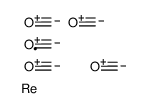 CAS#:14524-92-6
CAS#:14524-92-6 CAS#:15684-00-1
CAS#:15684-00-1 CAS#:14220-21-4
CAS#:14220-21-4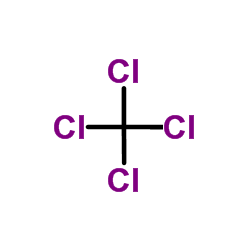 CAS#:56-23-5
CAS#:56-23-5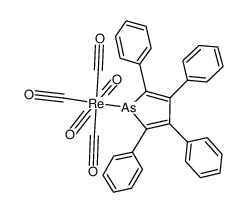 CAS#:41706-12-1
CAS#:41706-12-1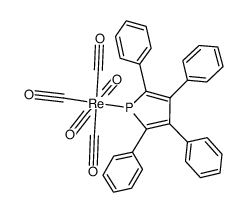 CAS#:71252-85-2
CAS#:71252-85-2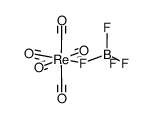 CAS#:78670-75-4
CAS#:78670-75-4 CAS#:7647-01-0
CAS#:7647-01-0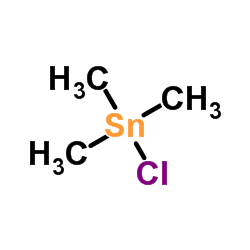 CAS#:1066-45-1
CAS#:1066-45-1